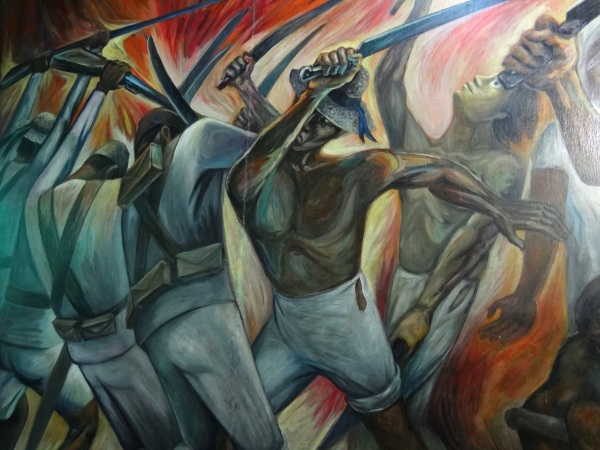On September 28th, a major earthquake hit Sulawesi, Indonesia. The magnitude 7.4 quake caused a high tsunami, which killed more than 2,000 people. According to International Federation of Red Cross And Red Crescent Societies (IFRC), about 211,000 people are internally displaced. As Xiong mentioned in his latest post, this disaster damaged thousands of schools and more than 160,000 students... Continue Reading →
Part Two: 100 Years After Emergency
(For Part Two, I sit down with Tiffany Cain, a PhD candidate at UPenn, to present a case study for community -focused archaeology that seeks to address post-conflict cultures in a non-colonial way.) When Tiffany and I sit down to speak, she has just come back from her 6th season of archaeological study in Tihosuco,... Continue Reading →
Part One: 100 Years After Emergency
When we hear the word “emergency”, so often it is referring to something immediate. I can be having a health emergency and a nation can be in a state of emergency due to armed conflict, among other things. Therefore, when considering “education in emergencies”, the reflex is to read it as a practice concerned with... Continue Reading →
Earthquake and Tsunami hit Eastern Indonesia: The lack of education exacerbates people and children’s experiences
On September 28th, an earthquake with a magnitude of 7.5 resulted in one of the most devastating tsunamis to hit eastern part of Indonesia. According to the New York Times, Sri Hidayati from the geological agency had delivered an informational geological map to the Sulawesi government. However, the government did not response or provide feedback... Continue Reading →
A Blunder Down Under? Australia’s Refugee Crisis
If I someone walked up to you on the street and asked you to point to Nauru, would you know where to point? If you're like me, you'd think of the world of Naboo from Star Wars! In which case, we would both still be wrong. Believe it or not, Nauru is a little tiny... Continue Reading →
Is integration a panacea?: Refugee teachers concern about their future
70% of 3.5 million Syrian refugees staying in Turkey is likely to stay, Ahval reported. Ahval introduced the report written by the U.S.-based Atlantic Council think tank, claiming that Turkey should take more efforts to integrate Syrian refugees into the Turkish society. The same discourse is applied to education for refugee children. Most international organizations and... Continue Reading →
Publicizing Progress: Making Sense of Education Amidst Conflict in Yemen
If you've been following along with international news, you have seen that the conflict in Yemen has been raging for about three years now. In very simple terms, the conflict is the result of two powerful men with different agendas and passionate supporters. This ABC News Australia video can shed some light on the subject.... Continue Reading →
No Name, No Education: Stateless Children Crises in Thailand and Malaysia
No state. No name. No identity. No rights. No education. No basic aid. What is left? A stateless child? According to Reuters, thousands of Myanmar refugees who live in Thailand are stateless, children born and raised without Thai citizenship. These stateless Myanmar children face critical challenges of acquiring access to quality education. Since the Thai... Continue Reading →
Learning in emergency: Refugee students are facing challenges after enrolled into schools
Four million refugee children do not attend school, the new report of UNHCR says. This report, “Turn the Tide: Refugee Education in Crisis,” explains that only 61% of refugee children attend primary school, and the enrollment of refugee children in school is failing to keep pace with the growing refugee population. UNHCR suggests that host... Continue Reading →
Kerala Floods: Immediate and Continuing Efforts are demanded
Last month, one of the worst floods which India has experienced killed more than 300 people in the Indian state of Kerala, according to The Guardian. Theirworld, a non-governmental organization based in the UK, reported that about 650 schools were affected by the floods. The research conducted by BROOKINGS reported that reopening schools should be... Continue Reading →









